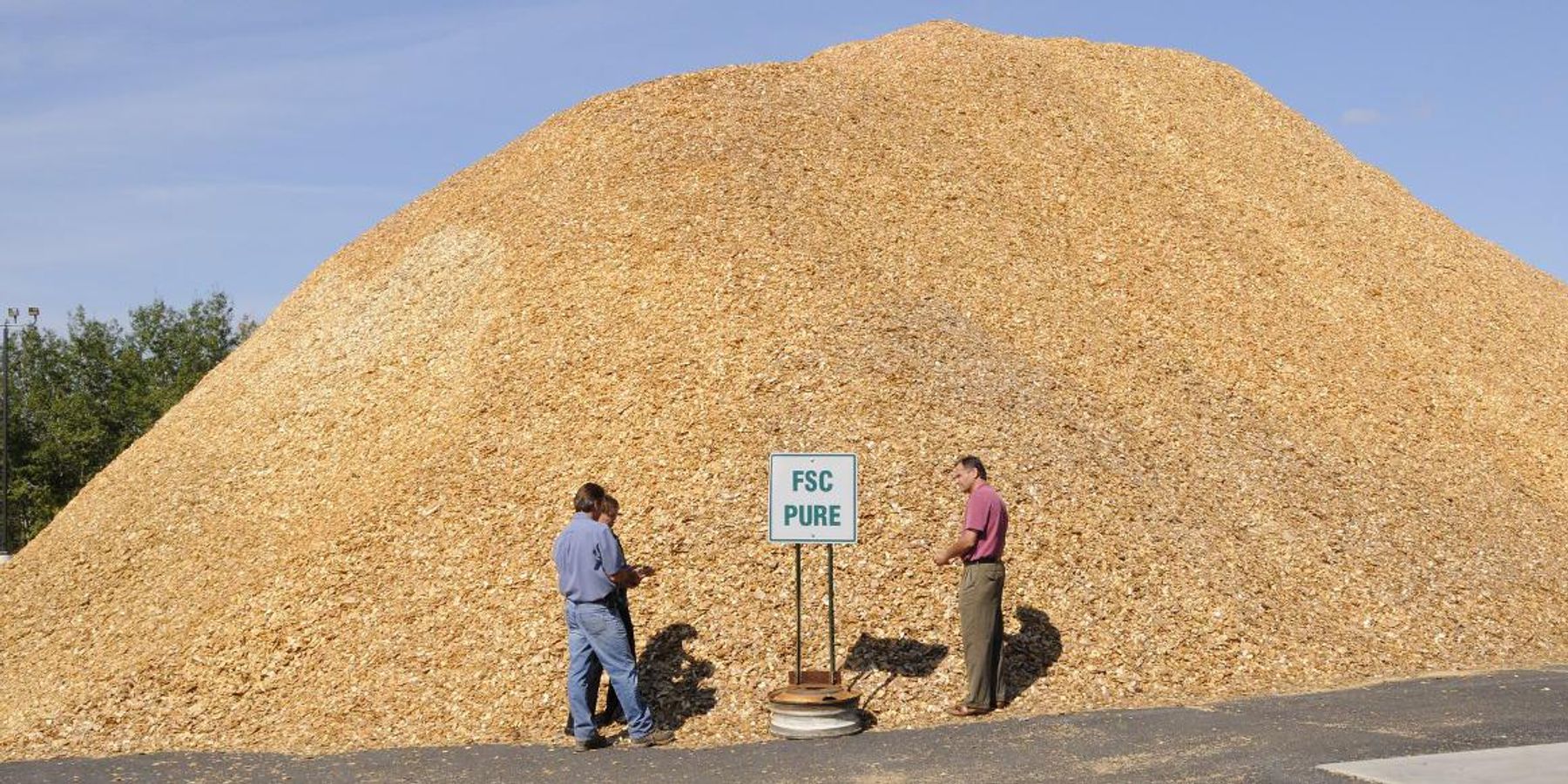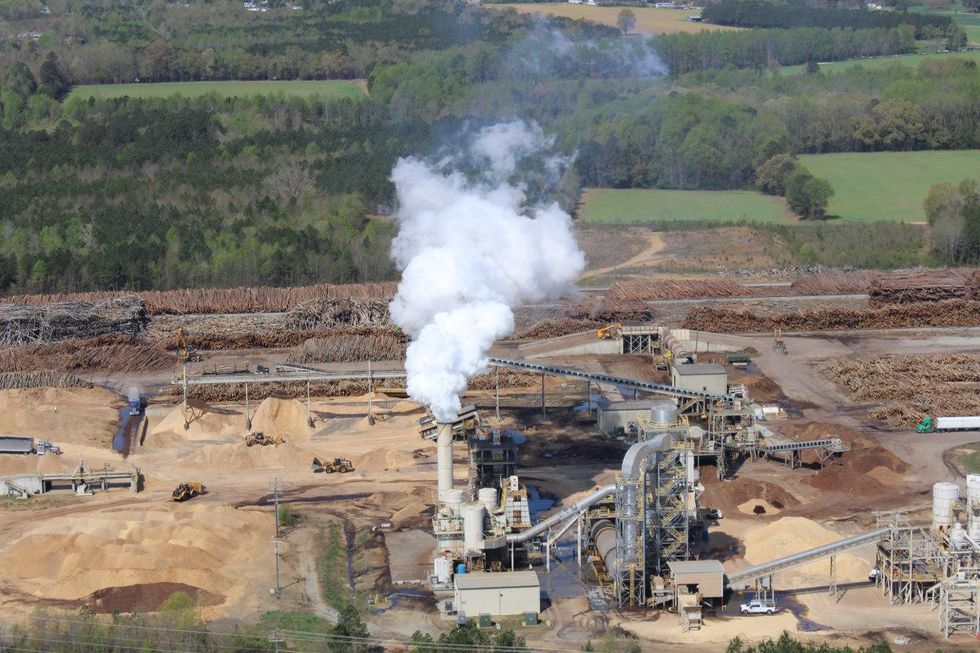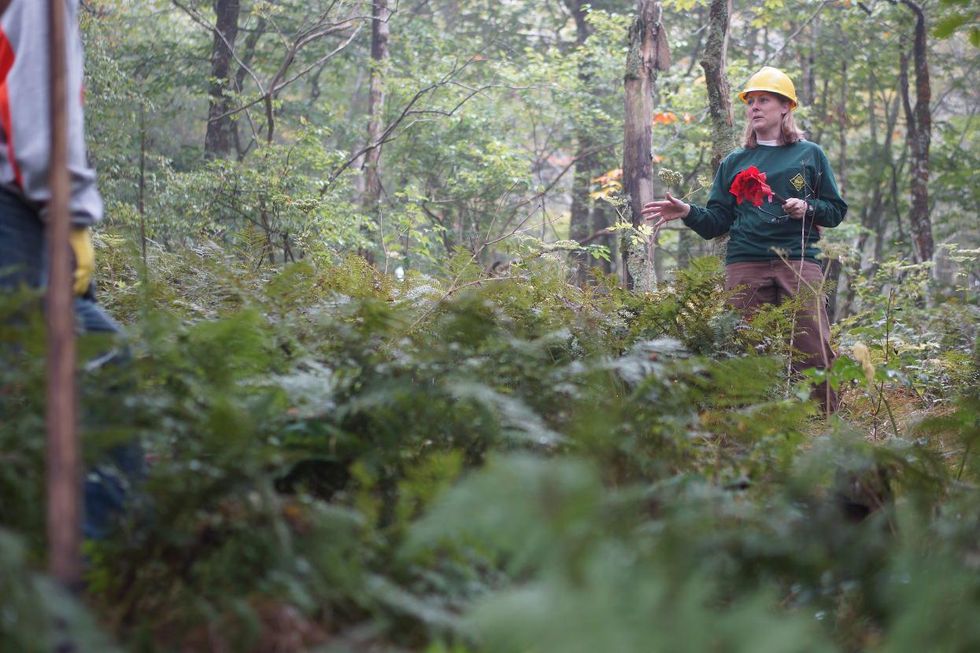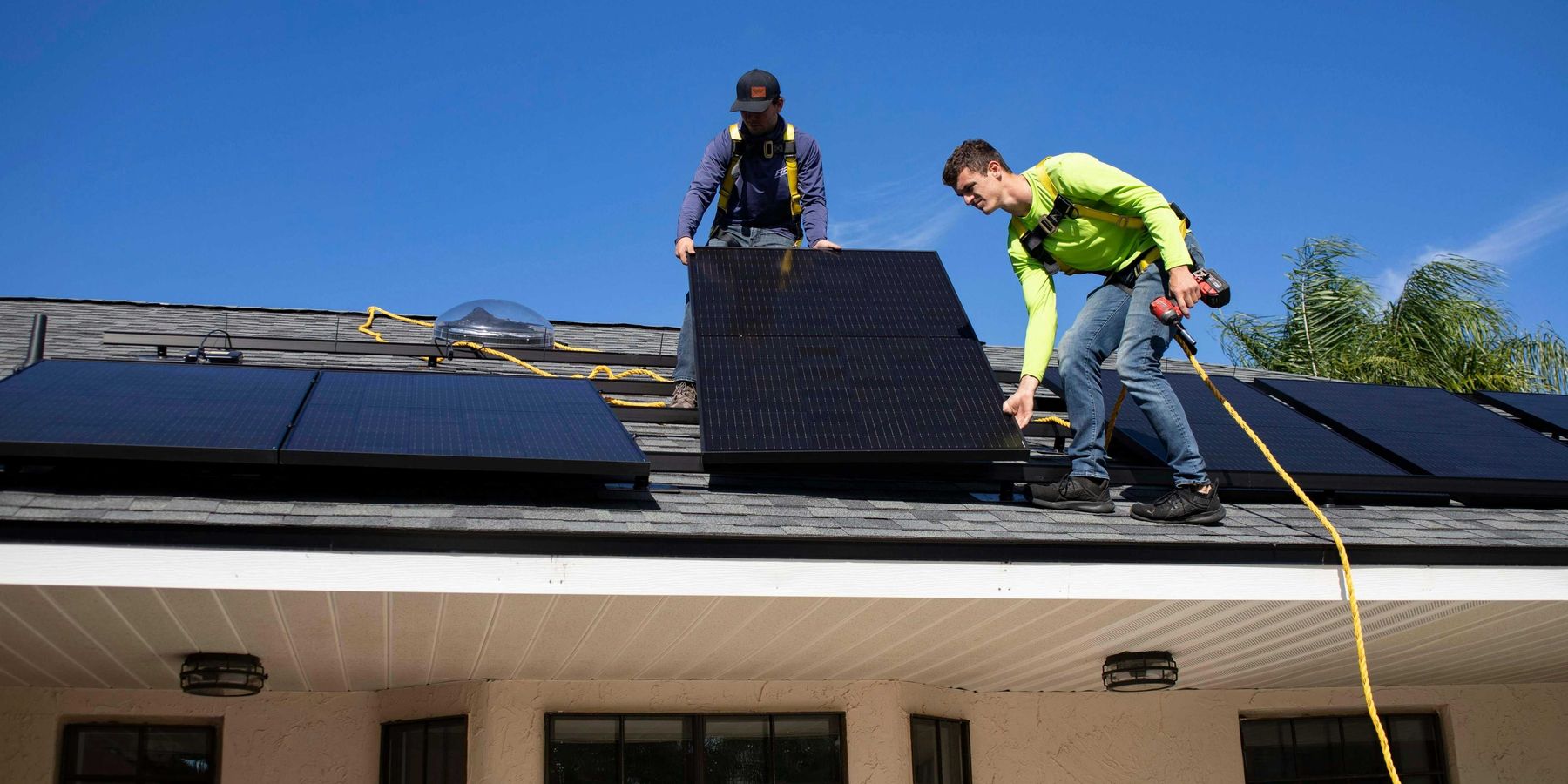
Paris climate agreement overlooks wood pellet loophole
"This rule that was designed to prevent you from counting carbon twice has effectively become a rule in which no carbon is counted at all."
With the U.S. back in the Paris Agreement, and with governments across the country evaluating how they can cut carbon emissions, a question remains about one contentious "carbon neutral" energy source: wood pellets.
Wood pellets are burned as a form of biomass energy, or bioenergy, and are touted as a "carbon neutral" energy source in the global transition away from fossil fuels. It became an energy staple for European countries in 2009 when the European Union set goals to cut carbon emissions by 20 percent of 1990 levels by the year 2020. In 2019, the EU accounted for approximately 75 percent of global wood pellet consumption.
A 2012 study projected that by 2020 about 60 percent of the EU's renewable energy would come from burning wood pellets as a carbon neutral alternative to coal. And data released by the EU at the end of 2020 indicates that they were set to meet this 20 percent goal while on track to reduce emissions by 37 percent by 2030.
But this latest report did not directly mention the use of wood pellets in the EU, primarily for residential heating, in its energy budget. This exclusion is emblematic of a flawed carbon accounting system for wood pellets that is leaving a chunk of emissions uncounted, and experts say the Paris Agreement will only create more missed emissions from the biomass sector.
Flawed climate change accounting

Aerial view of Enviva Biomass facility in Northampton County, NC. (Credit: Dogwood Alliance)
Producers harvest about 4.9 million metric tons of wood annually from the biodiverse forests of the Southeast U.S. These felled trees release carbon when cut and their end-use is as a fuel, which makes for tricky climate accounting.
"The way that emissions in general are reported at the national level as well as to the United Nations Framework Convention on Climate Change is by energy use and land use. Unfortunately, bioenergy falls into both categories," Rita Frost, campaigns director for the Southeastern forest protection nonprofit the Dogwood Alliance, told EHN. "We created accounting rules that said for bioenergy purposes, we're going to count the carbon emissions when you cut down the tree, so you don't have to count it when it goes out of the smokestack."
When a forest is cut down in North Carolina to make wood pellets, the carbon is supposed to be counted by the U.S. in their annual climate reports as a carbon sink loss. Forests, especially old growth forests like those found in the Southeast U.S., are an important source of carbon removal from the atmosphere, so when a forest is cut down, the emissions are, in theory, counted as a land use emission.
The emissions from wood pellets are not counted in the energy sector, "to do so would erroneously double count the climate impact of wood pellets in both the land sector and the energy sector," wrote a representative from the largest biomass supplier in the world, Enviva Biomass, in an email to EHN.
However, because of the way forests are classified in the U.S., these emissions aren't counted in either the land or energy sectors, Frost said.
"If you clear-cut a forest, as long as you don't turn the land into a parking lot or a tobacco farm, that land is still accounted for as forest," she said. "So this rule that was designed to prevent you from counting carbon twice has effectively become a rule in which no carbon is counted at all, and biomass looks like it's carbon neutral."
The U.S. does not account for the emissions from breaking down and compressing trees into wood pellets at these facilities either. And in addition to carbon emissions from these facilities, a 2018 report highlighted that these wood pellet plants often release carbon monoxide, smog, and fine particulate matter into the air contributing to respiratory and heart diseases in local residents.
With the U.S.'s reentry into the Paris Agreement, an international treaty aimed at combating climate change, earlier this year, experts say this flawed accounting system should be corrected.
Mary Booth, director of Partnership for Policy Integrity, a nonprofit that provides science and legal support to inform climate policy, said the U.S. placement in the Paris Agreement allows this loophole to persist.
"In order for wood to qualify toward renewable energy targets the country where the wood comes from has to be a member of the Paris Agreement – like be signed on to the Paris Agreement," she told EHN. She also noted that in 2018, new rules were instituted to allow countries in the agreement to continue not counting wood pellet emissions in the energy sector so long as the country where the wood came from accounts for it in land use.
Enviva said U.S. participation in Paris has nothing to do with the standard for biomass accounting.
Many of the biggest wood pellet companies that sell to Europe are located in the Southeast U.S. Because wood pellets are subsidized by many European countries as a renewable energy source, the U.S.'s backing out of the Paris Agreement had the potential to overturn the whole "sustainable wood pellet" slogan. With the U.S. back in, the new rules are a non-issue; Europe can continue burning biomass without counting the emissions.
Biodiversity impacts

North Carolina biologist Chris Kelly with flags to mark planting sites as a part of an effort to restore red spruce in the Southern Appalachians. (Credit: USFWS)
The scale of tree harvesting in the U.S. is another concern. Biomass makes up a "relatively small slice," of total domestic logging, said Booth. Enviva also noted that only 2 percent of forests in the Southeast are harvested for biomass exclusively.
At the same time, Booth points out that the concentration of these wood pellet facilities in places like North Carolina and Mississippi contributes to an unequal burden of habitat destruction and pollution in certain communities, usually low income communities and communities of color. A 2020 article produced by EHN, Southerly, and Scalawag noted that recent plant expansion projects and the building of new facilities is disproportionately impacting communities from Northampton County, North Carolina, to Alabama's Black Belt.
"If you took a picture of North Carolina, you would see that significant patches of trees have gone missing, and that's all terrestrial carbon that's now in the atmosphere," Booth said.
Frost said these discrepancies are difficult to spot at a national level because the U.S. counts forest loss as a net value.
"At the end of the year, the final tally is counted as a sum of forests cut and growth over the course of the year, and does not go into specifics," she said. "And since clearcut lands are still counted as forest land, areas that may have been clear cut are still included in that net value as a positive forest value."
A report written by William Moomaw, Professor Emeritus of International Environmental Policy at the Fletcher School, Tufts University, further illustrates this point: "The United States reports a net growth in carbon stocks for the past several years. Many erroneously point to this as evidence that U.S. forests are increasing their capacity to remove carbon dioxide from the atmosphere and store it long-term. However, long-term and short-term carbon storage is not adequately delineated in the accounting process."
Frost added that because of the increasing demand for forest product industries like biomass, many natural forests with complex ecosystems are being cut down and converted into pine tree monocultures, which generally pull less carbon from the atmosphere compared to old growth forests and lack the level of species richness that can prevent massive forest die-offs.
Correcting the climate accounting

NATO Secretary General Jens Stoltenberg meets United States Special Presidential Envoy for Climate John Kerry. (Credit: NATO)
Frost believes that the best way to address this accounting issue is by switching biomass carbon counting from the land use sector to the energy sector, thus switching the accountability from the U.S. and its definition of a forest to the EU and other wood pellet consuming countries. This would also negate claims that biomass energy is carbon neutral.
"Enviva claims that burning their wood pellets reduces emissions by more than 80 percent, compared to coal. However, data from Drax Power in the UK, one of Enviva's biggest customers, show the facility emits more carbon dioxide when burning wood and other biomass than when burning coal, a reality that contradicts Enviva's claims.
It's urgent that the bioenergy industry come clean on its real carbon and forest impacts," wrote Booth in a 2016 report. The report notes that in 2013, the carbon emissions rate for coal at Drax Power was approximately 1,910 pounds per megawatt-hour of electricity compared to 2,128 pounds per megawatt-hour for biomass. With the increasing demand for renewable energy in the UK, that number was projected to increase.
"If Biden and the rest of the world want to stay true to the goals of the Paris Agreement, they need to prioritize forest restoration and management that doesn't reduce carbon by cutting down trees," Booth said.
Banner photo: Curran Renewables wood pellet manufacturing mill in New York. (Credit: Wild Center/flickr)
Editor's note: This story has been updated to clarify European Union renewable energy goals.













